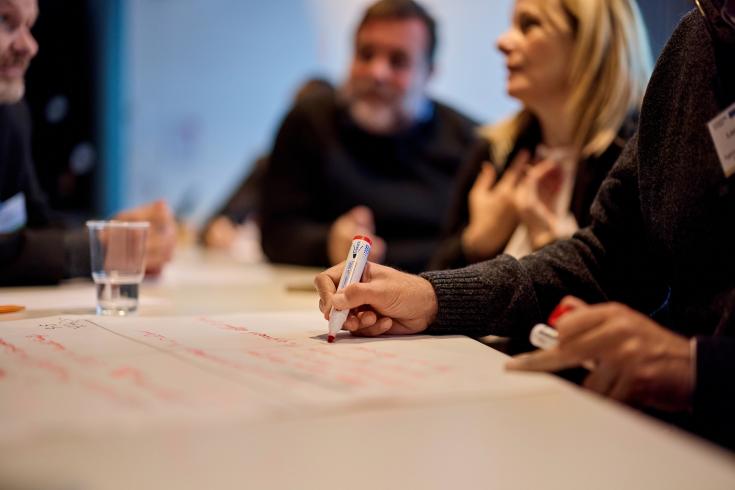Innovation for the Green Transition

There is an emerging consensus that innovation policies must be geared towards solving societal challenges such as the green transition. Innovation policies have thus evolved from linear models focused on economic growth in the 1960s, to national innovation systems for competitiveness in the 1990s, to the most recent approaches oriented to transformative changes.
Also spearheaded by the European Green Deal and the Sustainable Development Goals (SDGs), smart specialisation strategy (S3) must not blindly follow competitiveness logic but must respond to broader regional and societal challenges and be an ‘intermediate step towards the longer-term goals of fostering sustainability and inclusiveness’.
Novel innovation policy concepts such as transformative innovation policies, challenge-oriented innovation policies, mission-oriented innovation policies aim to provide policy directionality to address grand societal challenges such as the green transition (read our policy brief on open, social, and responsible innovation).
These policy concepts require regions to develop new governance and administrative capacities, to engage with legitimate, reflexive, and responsible governance arrangements, to coordinate policies across policy silos, and to implement integrated policy-mixes to solve societal challenges (read our policy brief on regional innovation governance).
The Joint Research Centre has recently published two reports Towards Green Transition in EU regions and Case studies towards Green Transition in EU regions that illustrate how five European regions are using S3 to promote the green transition: the Basque Country in Spain, the Centro region in Portugal, the region of East & North Finland, the region of Western Macedonia in Greece and the region of West Netherlands.
Main green transition challenges in regions
Main Green Transition challenges faced in EU regions by the Case Study Regions.
- Oversized carbon footprint generally, due to peripherality
- Need to improve sustainability of mining industry
- Decarbonisation of steel making industry
- Enhancing industrial circularity – particularly in wood/timber/forest sector
- Greening of the Port of Rotterdam, through large-scale application of offshore wind power and production/distribution of green hydrogen
- Cleaning the agri-food sector, including decarbonisation of major greenhouse-based horticultural operations at ‘Greenport’
- Further improving sustainable mobility
- Increasing the availability of new skills in energy transition related fields
- Reducing energy intensity and consumption of fossil fuels in industry generally
- Increasing diversification of primary energy sources, with more renewable energy
- Reducing greenhouse gas emissions in key sectors such as transport and buildings
- Shifting to a circular economy with reduced consumption of raw materials, re-use and recycling of waste across industry – including food and fishery value chains
- Green transformation of larger energy-intensive and polluting industries - e.g. cement and ceramics
- Reducing extraction of raw materials, mainly minerals
- Achieving circularity in waste-generating sectors – including the waste sector itself
- Harnessing Green Transition to effectively address territorial/demographic imbalances in the region
- Implementing the major planned initiative to replace the dominant lignite-based power industry with green hydrogen production and related R&D facilities
- Addressing social impacts of 8,000 direct job losses anticipated from lignite-related closures
- Successful upgrading of lignite power workers’ skills for new activities
- Convincing the local population of the benefits of transition and helping them engage positively with it
The reports highlight that S3 can be a driving force for innovation-led green transition when regional policymakers use directionality to promote policy experimentations, horizontal policies, and mission-oriented approaches.
Indeed, the green transition requires regions to adopt a broad range of innovation policies that encompass multi-technology, multi-actor and multi-sectoral endeavours, with high user-involvement to foster system-level Green Transition, rather than simply promoting ‘green technology’ developments.
The reports also note the challenge for regional policymakers to engage civil society more broadly to respond to the complexity of addressing societal challenges. The Policy Learning Platform has organised a webinar on mission-oriented innovation policies to better understand how regional policymakers could use mission-oriented approaches to address place-based societal challenges while engaging a broad range of different stakeholders.
For more information, read the Joint Research Centre technical reports: Towards Green Transition in EU regions and Case studies towards Green Transition in EU regions
